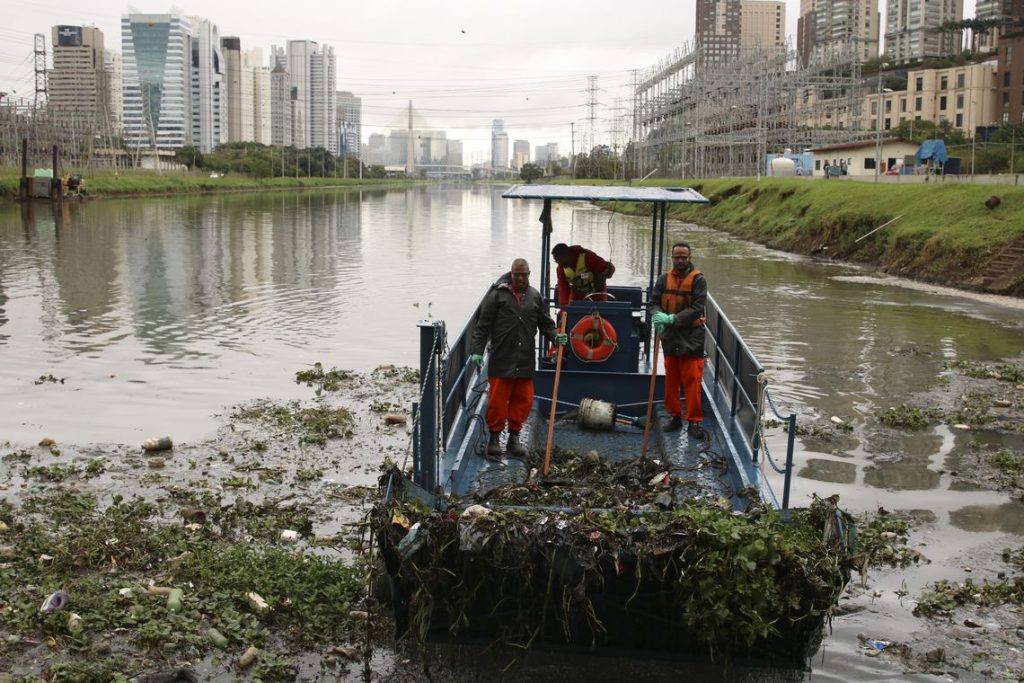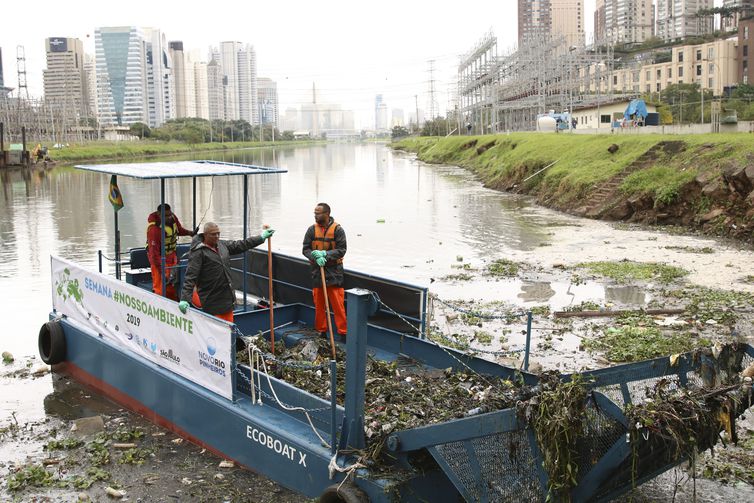SÃO PAULO, BRAZIL – The Novo Rio Pinheiros project foresees interventions in areas of all the sub-basins of the large tributaries of the river, where about 3.3 million people live. Also included are socio-environmental actions to engage the population in the recovery of watercourses in the region.
“This is a very significant amount of money for the hiring of clean-up works. And the commitment of the government of São Paulo — I reaffirm again — is to deliver the Pinheiros River clean by December 2022. It will have adequate conditions and international standard of classification. I am convinced that we will reach this result,” said Governor João Doria, when launching the project on Friday 16th, alongside the president of the Basic Sanitation Company of the State of São Paulo (Sabesp), Benedito Braga.
“The value of the investment will not only be R$1.5 billion (US$375million). We still have an expectation of more than R$3 billion, giving a total of R$4,6 billion to the project. We have already had the investment of R$70 million, and we have other smaller ones, such as the acquisition of equipment recently by the Metropolitan Water and Energy Company Emae,” said Doria.
According to the governor, the expectation is that the R$3 billion come from the private sector in a program of Public-Private Partnership (PPP).
The actions will be hired based on performance — an innovative way of recruiting services, according to the government of São Paulo. Sabesp defines indicators and goals to be achieved by the companies, with the remuneration varying according to the fulfillment of the proposed objectives.
In other words, there will not only be remuneration for physical works, but also a variable for the final result obtained. To evaluate the performance, goals such as the water quality of the stream and the total of new buildings connected to the network will be considered.

The government reported that a complete mapping of the entire area was made, including the location of the sewage connections. The mapping identified about 500,000 properties that should have their sewage diverted to the treatment plant, and 73,000 of these need to be connected to the collection networks.
In recent weeks, fourteen calls for tenders were launched to hire companies interested in the works.
“The entrepreneur will have to connect all the houses to the system, and we will monitor the work. It is necessary to reach the goal by the result. That is, the contractor himself will be interested in doing the works with agility,” said the president of Sabesp, Benedito Braga.
The New Pinheiros River is an action carried out by Sabesp and other state agencies, coordinated by the Secretariat of Infrastructure and Environment. Parallel to the sanitation actions, Emae has been correcting the silting up and waste discharge of the river.
The work began in June and aimed to remove 1.2 million cubic meters of waste. In the first semester alone, 2,300 tons of garbage were removed from the river. With the eco-boats, which began testing two months ago, the company has already collected 200 tons of floating trash.
The cleaning up, according to the project, will have the active participation of the community, either to connect to the existing sewage network or to properly dispose of the garbage.
Thrown into the street, the garbage will end up in rainwater drainage galleries and streams, contributing to pollution.

Novo Pinheiros will work together with other programs of Sabesp and the Government of São Paulo to clean up the river and return it clean to the population.
One of the programs is the Clean Stream program, started in 2007, in partnership with the São Paulo City Hall, to improve the water quality of the capital’s springs, rivers, and streams. Through it, 152 streams have already received interventions.
In addition to the environment, the benefits reach the people who live near the watercourses through adjustments in the sanitary sewage system, cleaning, maintenance, and environmental education.
The Tietê Project, which also includes Pinheiros, was started in 1992 to create infrastructure for the collection, transportation, and treatment of sewage.
The stain of pollution of the Tietê River has already retreated from 530 km to 122 km, a reduction of 77 percent. SOS Mata Atlântica audits the data.
With an investment of US$3 billion in the project, more than ten million people from São Paulo began to have sewage collection and treatment with these works, with collection increasing from seventy percent to 87 percent, and treatment from 24 percent to seventy percent.

